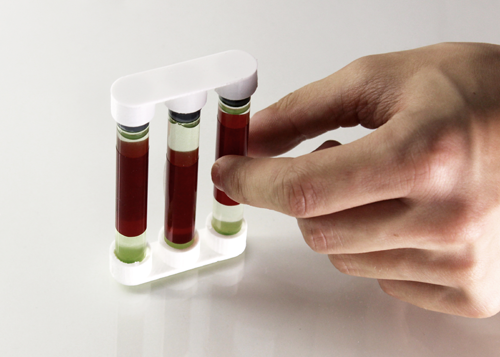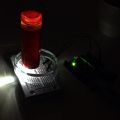No edit summary |
|||
| Line 6: | Line 6: | ||
[[File:fluid3.png|600px]] | [[File:fluid3.png|600px]] | ||
Euglena Time is ab experimental project around the 4 main correlations that define the concept of rhythm: | Euglena Time is ab experimental project around the 4 main correlations that define the concept of rhythm: | ||
Revision as of 21:56, 27 April 2020
Euglena Clock
„Nothing is motionless in the eyes of the rhythmanalyst. He hears wind, rain, thunderstorm. In observing a pebble a wall or a tree he precieves the slowness of movements of these objects. Their movement is slow only in proportion to our time, our bodies, our rhythms.“
//Kurt Meyer, Rhythms, Streets, Cities
Euglena Time is ab experimental project around the 4 main correlations that define the concept of rhythm:
- mechanical and organic - merging technological and natural, linear and circular time
- repetition and difference - understanding Euglenas circular rhythm of time
- continuous and discontinuous - studying the unique rhythms of each Euglena culture
- discovery and creation - observing the rhythms of Euglena and creating a habitat for them
The goal is to create an hourglass as one of the oldest technological, linear timepieces which form a habitat for Euglenas natural, circular rhythms of time. Euglena is a microorganism that does photosynthesis and therefore is attracted by light. In my experiments, I study this phototaxis (orientation by light). For doing so I try to influence their behavior in relation to different light situations.
How to read Euglena Time
Euglena clock deals with the theory of different time systems. It is a homage to time as a relative measure and the organic, circular rhythm of natural time. Therefore it cannot be "read" in the traditional way. It is more of a tool to experience time as a fluid matter and to be conscious of its flow. Similarly to the way, people estimated time by following the sun's path, long before the invention of technological time-measuring instruments, you can read euglena time by observing different states of green and decide by experience when it is time to switch it over.
Experiments
Experiment1
Goal: Euglena cannot recognize red light, therefore I wrapped the tube in transparent red foil to see if they would concentrate on the transparent bottom where the light source is.
Setup: Glass tube filled with water and Euglena, the tube is wrapped in semitransparent red foil. An LED light is placed on the bottom of the glass, which is not covered with foil.
Duration: 12 hours
Outcome: After 12 hours there is a visible concentration on the bottom of the tube. (Picture 3)
Experiment 2
Goal and Setup: After seeing the concentration after 12 hours from Experiment 1 I wanted to find out how long it takes to have a visible concentration of Euglena. Therefore I repeated the same experiment for 1 hour.
Outcome: After 1 hour there is already a clear distinction between the green color at the top and bottom of the glass to be made.
Duration: 1 hour
Experiment 3
Goal and Setup: After Experiment 1 I wanted to find out to what degree gravity influenced the concentration on the bottom, therefore I made the same experiment upside down. Is the same effect occurring if only daylight is used instead of a LED?
Duration: 24 hours
Outcome: The concentration on the top of the glass is clearly recognizable. A LED light is clearly not needed. I will, therefore, proceed with the use of daylight.
Experiment 4
Goal: Create a concentration that is visible through the red foil. Duration: 24hours
Setting up sterile Euglena cultures
To avoid contamination in the final hourglass I needed to setup a new culture under sterile conditions. The recipe for doing so can be found on the frontpage of habitats.
- Picture 1: setting up fresh cultures under sterile conditions
- Picture 2: The new cultures contain roughly the same amount of euglena and are used to compare their individual time rhythms according to daylight
















